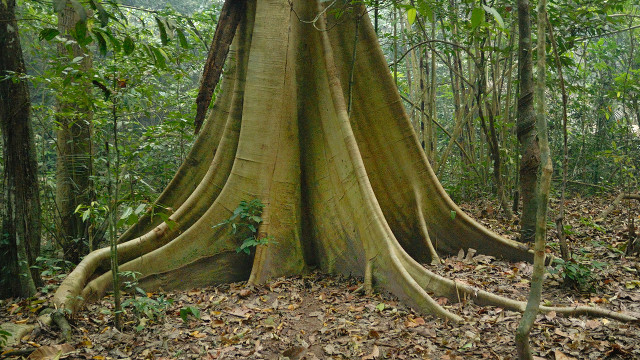SUMMARY
This is AI generated summarization, which may have errors. For context, always refer to the full article.

JAKARTA, Indonesia – The Philippine government has reduced the number of illegal logging “hotspots” by 84% in 3 years, said an environment official on Tuesday, May 6, during an international conference on forest conservation.
Department of Environment and Natural Resources (DENR) Undersecretary Demetrio Ignacio said from 197 hotspots in 2011, the number is down to 31 in 2014.
He showcased the country’s fight against illegal logging and its reforestation program during the two-day Forests Asia Summit held in Jakarta, Indonesia.
“Our forest is now down to 7.2 million hectares or 24% of our land area, one of the lowest forest cover in Southeast Asia. But we have started to recover the forest that we lost,” he told the audience of around 1,000, composed of scientists, environmentalists, private sector leaders, and government officials.
The crackdown on illegal logging hotspots – or areas in the country where the crime is rampant – has been successful primarily because of the logging moratorium imposed by President Benigno Aquino III in 2011, he said. Executive Order 23 bans the cutting down of trees in natural forests nationwide.
The government has also reportedly confiscated 25.5 million board feet of illegally processed and illegally cut wood since 2011. More than 1,200 cases against persons involved in illegal logging have been filed in court with 186 convictions.
Challenges remain
Despite these successes, illegal logging, especially in Agusan del Norte in Mindanao and in northern Luzon, remains a major threat to Philippine forests and biodiversity. (READ: Illegal loggers cut down 1,000 endemic trees in Negros)
Many of the remaining hotspots are in upland areas difficult to access for forest rangers and law enforcement. Illegal loggers in Agusan del Norte for example use the Agusan River to float illegally cut logs. Often, they are hidden beneath legally cut timber.
Lack of effective monitoring in ports all over the archipelago also makes tracking down the contraband difficult. (READ: P700,000 worth of illegal lumber apprehended at Manila port)
Owners of illegal logging concessions are able to use political or military connections in order to get away with the crime, according to a government employee deeply involved in anti-logging operations who requested for anonymity.
Though statistics show that the filing of cases against those involved in illegal timber trade has led to convictions, cases have also been abandoned and concessions allowed to continue.
Restoring forests
As the government pursues efforts to decrease illegal deforestation, it continues implementing its reforestation program, said Ignacio.
The National Greening Program (NGP), the most well-funded environmental project of the government, has so far planted 392 million trees over 683,000 hectares of land. This year, the DENR aims to plant 200 million more trees over another 400,000 hectares.
The NGP’s overall goal is to plant 1.5 billion trees over 1.5 million hectares by 2016. This will bring up the country’s forest cover from 24% to 30% of the Philippine total land area.
The trees being planted under the program are categorized as either exotic species or indigenous species. Exotic species – like rubber, cacao, coffee and types of fruit trees – are planted in non-protected areas mainly as a way to provide livelihood for rural communities, Rebecca Aguda of the DENR’s Forest Management Bureau told Rappler.
Indigenous species, like narra and Philippine mahogany, are planted in protected areas and natural forests. The NGP has come under fire for planting less indigenous species compared to exotic species.
But Aguda says native trees grow very slowly compared to exotic trees that can restore Philippine forest cover at a much faster rate.
Following the devastation of Typhoon Yolanda (international name Haiyan), the DENR is also planting mangroves in coastal areas as a way to protect seaside communities from sea level rise and storm surge. – Rappler.com
Dipterocarp tree image from Shutterstock
Add a comment
How does this make you feel?
There are no comments yet. Add your comment to start the conversation.